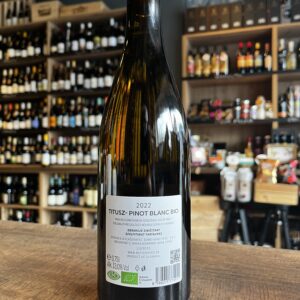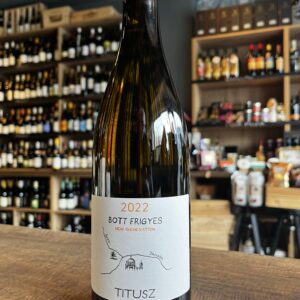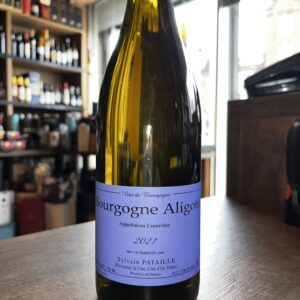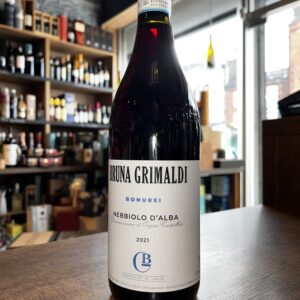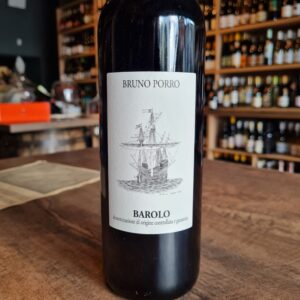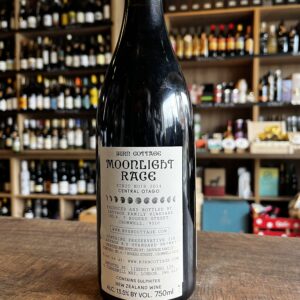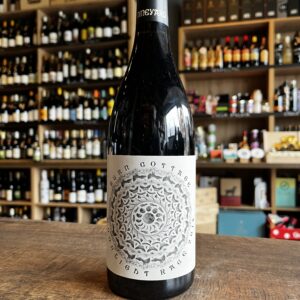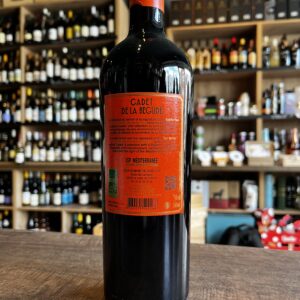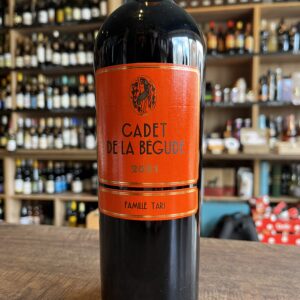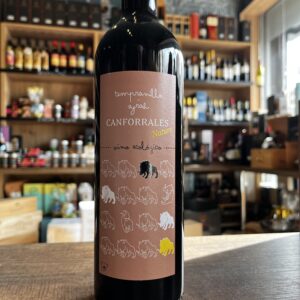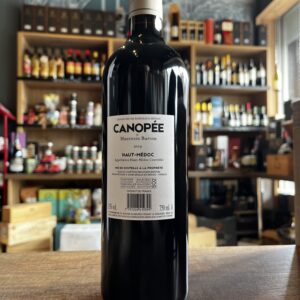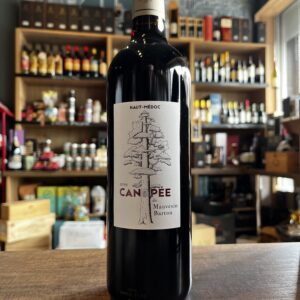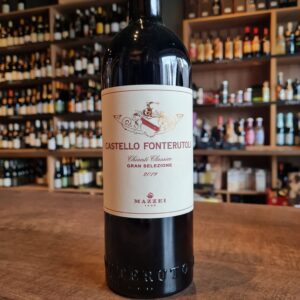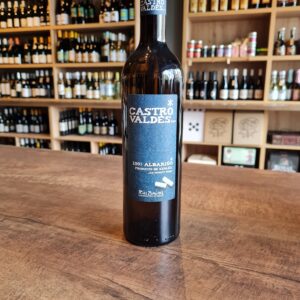-
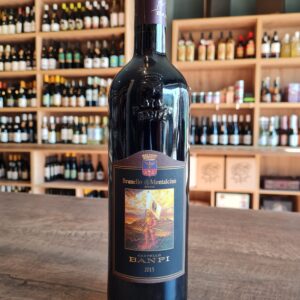 A classic from Castello Banfi in Montalcino.Elegant and balanced Brunello, characterized by a sweet, rich and complex aroma of fruit jam. A wine with great structure that is well balanced by a good softness and acidity on the final. Extremely persistent with excellent aging potential. Game, red meats or aged cheese. Or just on it's own with good company!
A classic from Castello Banfi in Montalcino.Elegant and balanced Brunello, characterized by a sweet, rich and complex aroma of fruit jam. A wine with great structure that is well balanced by a good softness and acidity on the final. Extremely persistent with excellent aging potential. Game, red meats or aged cheese. Or just on it's own with good company! -
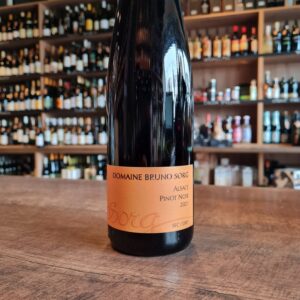 The late Bruno Sorg and his son François are responsible for some of the finest, richest and most concentrated wines in Alsace. The Sorg family have been producing wine in the Alsace since the 18th century, with this particular branch of it established in the late 1960s by Renée and the late Bruno Sorg. Alsace is becoming better known for and offering superb value in comparison to some Pinot from Burgundy. A complex Pinot, that has good fruit density, freshness along with a savoury dimension. Fantastic value!
The late Bruno Sorg and his son François are responsible for some of the finest, richest and most concentrated wines in Alsace. The Sorg family have been producing wine in the Alsace since the 18th century, with this particular branch of it established in the late 1960s by Renée and the late Bruno Sorg. Alsace is becoming better known for and offering superb value in comparison to some Pinot from Burgundy. A complex Pinot, that has good fruit density, freshness along with a savoury dimension. Fantastic value! -
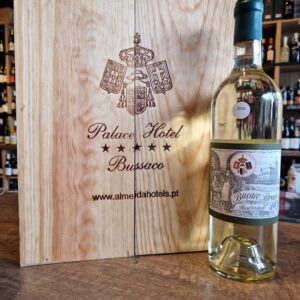 Alexandre de Almeida, founder of the oldest hotel chain in Portugal with the same name, began producing Buçaco Wines in 1917 when he realized what the Hotel Winery concept meant after many visits to European hotels, including those on the French “Côte D’Azure”. This gave him the idea to open his own winery at the Buçaco Palace, starting to produce varieties that would come to be known as the glorious “Buçaco wines”. In the early 20th century, one of the most interesting pages on Portuguese wine was created, the wine that was to become a much-envied icon, but which was always intentionally kept out of the limelight. Its creator, Alexandre de Almeida, adopted the concept of linking luxury hotels to a winery with their own wine. If we look back, ever since the first harvests we realized the importance of this icon that was served to kings, queens and heads of state, as proven by menus, proudly kept at the Hotel Palace Buçaco. Buçaco wines were just that: objects of culture limited to very restricted circles, the elite. Their fantastic and noble labels still bear the symbol of their nobility to this day and age. The Buçaco wines were and still are always produced in the same way using the same methods as in the past. The fact that the grapes come from the Dão and Bairrada regions guarantees a wonderful wine that nobly develops in the bottle. If you happen to visit this unique 5* Hotel, just North of Coimbra(between Lisbon and Porto) you will be in for an experience. Situated in the Bussaco National Forest, this 5-star hotel occupies the hunting palace of the last Portuguese kings. Palace Hotel do Bussaco is an excellent example of Manueline-Gothic architecture. Its richly decorated corridors feature antique furnishings, large paintings and traditional Portuguese glazed tiles. Its elegant restaurant offers a range of exclusive Bussaco wines(only). Classic French cuisine and traditional Portuguese dishes are served at Palace Hotel do Bussaco’s restaurant. It is decorated with paintings by João Vaz, Moorish ceilings and exotic hardwood floors. Guests can try a glass of rare Port vintage at the bar. Fantastic experience with amazing wines
Alexandre de Almeida, founder of the oldest hotel chain in Portugal with the same name, began producing Buçaco Wines in 1917 when he realized what the Hotel Winery concept meant after many visits to European hotels, including those on the French “Côte D’Azure”. This gave him the idea to open his own winery at the Buçaco Palace, starting to produce varieties that would come to be known as the glorious “Buçaco wines”. In the early 20th century, one of the most interesting pages on Portuguese wine was created, the wine that was to become a much-envied icon, but which was always intentionally kept out of the limelight. Its creator, Alexandre de Almeida, adopted the concept of linking luxury hotels to a winery with their own wine. If we look back, ever since the first harvests we realized the importance of this icon that was served to kings, queens and heads of state, as proven by menus, proudly kept at the Hotel Palace Buçaco. Buçaco wines were just that: objects of culture limited to very restricted circles, the elite. Their fantastic and noble labels still bear the symbol of their nobility to this day and age. The Buçaco wines were and still are always produced in the same way using the same methods as in the past. The fact that the grapes come from the Dão and Bairrada regions guarantees a wonderful wine that nobly develops in the bottle. If you happen to visit this unique 5* Hotel, just North of Coimbra(between Lisbon and Porto) you will be in for an experience. Situated in the Bussaco National Forest, this 5-star hotel occupies the hunting palace of the last Portuguese kings. Palace Hotel do Bussaco is an excellent example of Manueline-Gothic architecture. Its richly decorated corridors feature antique furnishings, large paintings and traditional Portuguese glazed tiles. Its elegant restaurant offers a range of exclusive Bussaco wines(only). Classic French cuisine and traditional Portuguese dishes are served at Palace Hotel do Bussaco’s restaurant. It is decorated with paintings by João Vaz, Moorish ceilings and exotic hardwood floors. Guests can try a glass of rare Port vintage at the bar. Fantastic experience with amazing wines -
Out of stock
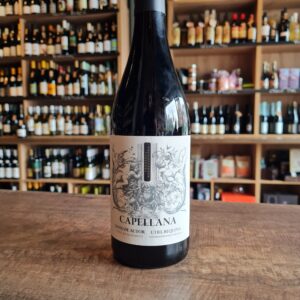 This complex and medium to full-bodied wine is made from Cabernet Sauvignon and Tempranillo grapes. It matured for 7 months in American oak barrels to its full taste. The Cabernet brings strength and abundance here, Tempranillo provides fruit and structure. The result is a wine with character and personality. Cherry juice-colored to brick-red in the glass. Overwhelming scent of cherries, plums and wild berries; the same fruits pickled in rum, all nobly underlaid with fine toasted notes from the wooden barrel. The oak wood is noticeable, but does not dominate the wine. In the mouth the wine is well structured, full and with little surprising tannins. Ideal to accompany grilled meats and different types of stews.
This complex and medium to full-bodied wine is made from Cabernet Sauvignon and Tempranillo grapes. It matured for 7 months in American oak barrels to its full taste. The Cabernet brings strength and abundance here, Tempranillo provides fruit and structure. The result is a wine with character and personality. Cherry juice-colored to brick-red in the glass. Overwhelming scent of cherries, plums and wild berries; the same fruits pickled in rum, all nobly underlaid with fine toasted notes from the wooden barrel. The oak wood is noticeable, but does not dominate the wine. In the mouth the wine is well structured, full and with little surprising tannins. Ideal to accompany grilled meats and different types of stews. -
Out of stock
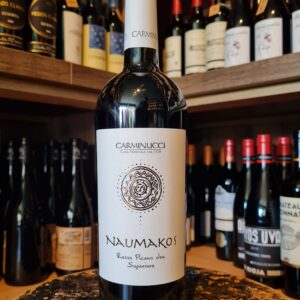 The Carminucci company, with its 90 years of history, is inserted in the wonderful wine landscape of the Marche, a region that gives powerful emotions thanks to its landscapes and a geographical conformation that allows it to have very particular climatic excursions. Kissed by the Adriatic and pampered by the hills, this region, rich in native vines and wine culture, offers a wine obtained from a blend rich in charm such as Rosso Piceno, which we tasted in its "superior" version. Montepulciano, combined with Sangiovese, ages in small and large barrels to bring to the table a product with marked minerality and softness, strength and structure, always sweetened by fresh notes that make it unique in its characteristics. The color is rich in anthocyanins, the light is unable to penetrate the richness of color of this red wine, but the first impact on the nose makes it less austere than you might imagine. Ample in its aromas of red fruit and slightly spicy in sweet notes, Carminucci's Rosso Piceno is a pleasant wine from the first sip for its authenticity and balance. If you leave it in your mouth for a moment, warm Mediterranean flavors emerge combined with a pleasant note of licorice, a balanced alcohol that has a strong but never invasive structure. Its harmony is given by the set of sensations and gustatory touches, a frank and very balanced wine, it combines the sapidity of the area with an acidity that leads it to be a long-lived wine with excellent resistance over time. Excellent with red meats or game.
The Carminucci company, with its 90 years of history, is inserted in the wonderful wine landscape of the Marche, a region that gives powerful emotions thanks to its landscapes and a geographical conformation that allows it to have very particular climatic excursions. Kissed by the Adriatic and pampered by the hills, this region, rich in native vines and wine culture, offers a wine obtained from a blend rich in charm such as Rosso Piceno, which we tasted in its "superior" version. Montepulciano, combined with Sangiovese, ages in small and large barrels to bring to the table a product with marked minerality and softness, strength and structure, always sweetened by fresh notes that make it unique in its characteristics. The color is rich in anthocyanins, the light is unable to penetrate the richness of color of this red wine, but the first impact on the nose makes it less austere than you might imagine. Ample in its aromas of red fruit and slightly spicy in sweet notes, Carminucci's Rosso Piceno is a pleasant wine from the first sip for its authenticity and balance. If you leave it in your mouth for a moment, warm Mediterranean flavors emerge combined with a pleasant note of licorice, a balanced alcohol that has a strong but never invasive structure. Its harmony is given by the set of sensations and gustatory touches, a frank and very balanced wine, it combines the sapidity of the area with an acidity that leads it to be a long-lived wine with excellent resistance over time. Excellent with red meats or game. -
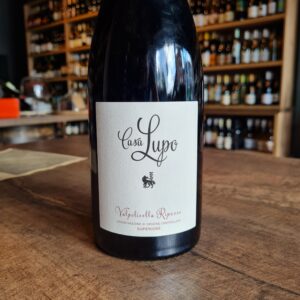 Great Ripasso wine here, any wine enthusiasts will see it as an honest to the point wine on it's Ripasso process. Otherwise known as a ‘Baby Amarone’. The term “Ripasso” means “repassed” referring to the production process whereby regular, fermented Valpolicella (which is a blend of three regional native red grape varieties – Corvina, Rondinella and occasionally Molinara) is added to a cask containing the skins and lees left over from recently fermented Amarone wines. The process of adding (or “repassing”) the lighter Valpolicella wine over the remainders of the “bigger” Amarone wine imparts additional color, texture and flavor to the Valpolicella wine. The “Appassimento” process is an ancient wine making technique used in Northern Italy to make Amarone – the Daddy of Italian wine and its by product Recioto della Valpolicella (a sweet red wine). Grapes are air dried on racks for a period of at least a couple of months and often as many as six, before being pressed. Also, it induces a second fermentation of the wine that increases the wine’s alcoholic content. The end result is a wine that retains the vibrancy of Valpolicella but is darker in colour, bigger and more flavourful and complex than the original Valpolicella. Ripasso wines are rich, full-bodied and share some of the same aroma and flavor profiles as Amarone wines, just less so. Since Ripasso wines are more approachable and less expensive than Amarones they can be enjoyed more regularly. The land is at an altitude of 450 meters above the see level and the soil is made by the alteration of calcareous-fossilized formations, in particular the red flake and biancone marble.After harvesting by hand, the Valpolicella, before aging, is macerated a second time on the mark of the Amarone just drawn and left to rest for about 15-20 days. Then a maturation in oak barrels of 500/1000 LT for 18 months takes place. Ageing in bottles follows that lasts until optimal maturity. It matches perfectly with mushroom risotto, red meat such as barbecue steak or white meat such as stewed rabbit, perfect with cheese of medium maturing.
Great Ripasso wine here, any wine enthusiasts will see it as an honest to the point wine on it's Ripasso process. Otherwise known as a ‘Baby Amarone’. The term “Ripasso” means “repassed” referring to the production process whereby regular, fermented Valpolicella (which is a blend of three regional native red grape varieties – Corvina, Rondinella and occasionally Molinara) is added to a cask containing the skins and lees left over from recently fermented Amarone wines. The process of adding (or “repassing”) the lighter Valpolicella wine over the remainders of the “bigger” Amarone wine imparts additional color, texture and flavor to the Valpolicella wine. The “Appassimento” process is an ancient wine making technique used in Northern Italy to make Amarone – the Daddy of Italian wine and its by product Recioto della Valpolicella (a sweet red wine). Grapes are air dried on racks for a period of at least a couple of months and often as many as six, before being pressed. Also, it induces a second fermentation of the wine that increases the wine’s alcoholic content. The end result is a wine that retains the vibrancy of Valpolicella but is darker in colour, bigger and more flavourful and complex than the original Valpolicella. Ripasso wines are rich, full-bodied and share some of the same aroma and flavor profiles as Amarone wines, just less so. Since Ripasso wines are more approachable and less expensive than Amarones they can be enjoyed more regularly. The land is at an altitude of 450 meters above the see level and the soil is made by the alteration of calcareous-fossilized formations, in particular the red flake and biancone marble.After harvesting by hand, the Valpolicella, before aging, is macerated a second time on the mark of the Amarone just drawn and left to rest for about 15-20 days. Then a maturation in oak barrels of 500/1000 LT for 18 months takes place. Ageing in bottles follows that lasts until optimal maturity. It matches perfectly with mushroom risotto, red meat such as barbecue steak or white meat such as stewed rabbit, perfect with cheese of medium maturing. -
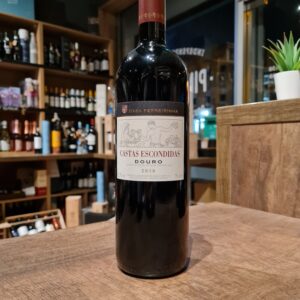 Is with wines like this one that you start uncovering the great potential of Douro wines. 'Castas Escondidas' translates as 'hidden varieties' and showcases old-vines, field-blend fruit and some of the lesser known grape varieties of the Douro Valley. What makes this drop a superior wine is not only the great quality of the terroir, region characteristics, the field blend vines used but most importantly the high intervention from skilled winemakers producing this wine. With all of these movements happening which by all means are fantastic such as natural wines, low intervention and so on, memories can be short and people will have some tendency to forget that winemakers spent hundreds of years studying the production of wine going by the scientific name of oenology and therefore they are oenologists with the main purpose being interventionists in every single process of the wine production!!! oh dear, I feel I am opening a can of worms here... As the magician himself describes “Casa Ferreirinha Castas Escondidas was designed to stage the varieties commonly used in batches of Port Wine, but rarely explored and which result in a perfect combination with other more well-known varieties” , says Luís Sottomayor, the winemaker responsible for Sogrape wines in the Douro. . “The small percentage of grapes harvested from old vines gives even more special characteristics to the final batch” Great with for special occasions, quality red meats and cheeses. Be responsible and drink this wine moderately as it is one of a kind
Is with wines like this one that you start uncovering the great potential of Douro wines. 'Castas Escondidas' translates as 'hidden varieties' and showcases old-vines, field-blend fruit and some of the lesser known grape varieties of the Douro Valley. What makes this drop a superior wine is not only the great quality of the terroir, region characteristics, the field blend vines used but most importantly the high intervention from skilled winemakers producing this wine. With all of these movements happening which by all means are fantastic such as natural wines, low intervention and so on, memories can be short and people will have some tendency to forget that winemakers spent hundreds of years studying the production of wine going by the scientific name of oenology and therefore they are oenologists with the main purpose being interventionists in every single process of the wine production!!! oh dear, I feel I am opening a can of worms here... As the magician himself describes “Casa Ferreirinha Castas Escondidas was designed to stage the varieties commonly used in batches of Port Wine, but rarely explored and which result in a perfect combination with other more well-known varieties” , says Luís Sottomayor, the winemaker responsible for Sogrape wines in the Douro. . “The small percentage of grapes harvested from old vines gives even more special characteristics to the final batch” Great with for special occasions, quality red meats and cheeses. Be responsible and drink this wine moderately as it is one of a kind -
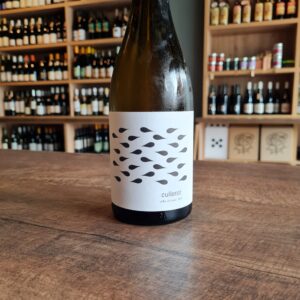 Celler del Roure is making very interesting wines with local grape varieties in the Valencia area. Many of these old, indigenous varieties are largely forgotten and Cullerot highlights three of them (Verdil, Tortosina, and Merseguera) together with Pedro Ximénez, Macabeo, Malvasía, and others. In addition to their focus on indigenous grape varieties, Celler del Roure is employing traditional vinifications methods: hand harvesting, fermenting with native yeasts in stone lagars, and aging in very old clay amphorae. Cullerot has a bit of skin contact, and is medium bodied with notes of stone fruit, tropical notes, apple skin, and clay-y minerality. A great, truly interesting, "almost-orange" skin contact white wine, for less than €20.
Celler del Roure is making very interesting wines with local grape varieties in the Valencia area. Many of these old, indigenous varieties are largely forgotten and Cullerot highlights three of them (Verdil, Tortosina, and Merseguera) together with Pedro Ximénez, Macabeo, Malvasía, and others. In addition to their focus on indigenous grape varieties, Celler del Roure is employing traditional vinifications methods: hand harvesting, fermenting with native yeasts in stone lagars, and aging in very old clay amphorae. Cullerot has a bit of skin contact, and is medium bodied with notes of stone fruit, tropical notes, apple skin, and clay-y minerality. A great, truly interesting, "almost-orange" skin contact white wine, for less than €20. -
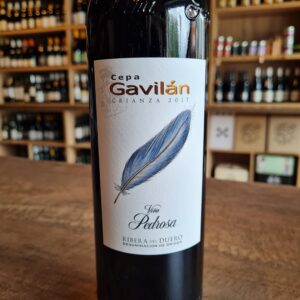 This is a wine with great intensity of character. It has an immediate spice dominated nose with clove and baked vanilla pod alongside of spicy red fruit flavours. It warms up to give a slight balsamic note with boysenberry jam and blackberry puree. The palate is textural with medium, yet soft, tannins which helps to keep it all together. A surprising amount of class and concentration for this price point.Just don't forget to decant it or let it breath before hand, or not. Enjoy!
This is a wine with great intensity of character. It has an immediate spice dominated nose with clove and baked vanilla pod alongside of spicy red fruit flavours. It warms up to give a slight balsamic note with boysenberry jam and blackberry puree. The palate is textural with medium, yet soft, tannins which helps to keep it all together. A surprising amount of class and concentration for this price point.Just don't forget to decant it or let it breath before hand, or not. Enjoy! -
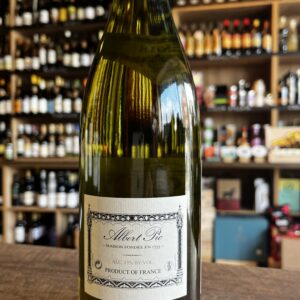
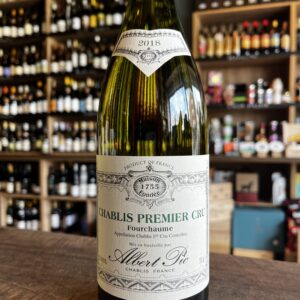 The maison Albert Pic et Fils was founded in 1755. The company is now owned by Baron Patrick de Ladoucette. Made from 100% Chardonnay grapes, this wine from Maison Albert Pic is a Chablis that comes from the central-eastern French region of Burgundy, on soils of Kimmeridgian origin with a low percentage of clay and marl. The vines are located in one of the seven Grand Crus with the appellation. Pair it white meats, blue cheeses but especially fish dishes. Serve at a temperature of 10-12°C in a wide goblet
The maison Albert Pic et Fils was founded in 1755. The company is now owned by Baron Patrick de Ladoucette. Made from 100% Chardonnay grapes, this wine from Maison Albert Pic is a Chablis that comes from the central-eastern French region of Burgundy, on soils of Kimmeridgian origin with a low percentage of clay and marl. The vines are located in one of the seven Grand Crus with the appellation. Pair it white meats, blue cheeses but especially fish dishes. Serve at a temperature of 10-12°C in a wide goblet -
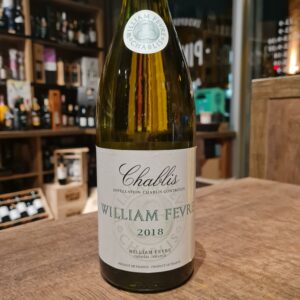
The Fèvre family had been running the Chablis vineyards in northwest France for more than 250 years when William Fèvre brought out the first vintage in this domaine. It was 1959 and William was taking over from his father, the great winemaker who took on 7 hectares of vineyards after World War II. This was the starting point for Domaine Williams Fèvre, one of the largest producers in Chablis, which currently has 78 hectares divided into 90 plots.
Chablis, is the source of the most racy, light and tactile, yet uniquely complex Chardonnay, while considered part of Burgundy, actually reaches far past the most northern stretch of the Côte d’Or proper. Its vineyards cover hillsides surrounding the small village of Chablis about 100 miles north of Dijon, making it actually closer to Champagne than to Burgundy. Champagne and Chablis have a unique soil type in common called Kimmeridgian, which isn’t found anywhere else in the world except southern England. A 180 million year-old geologic formation of decomposed clay and limestone, containing tiny fossilized oyster shells, spans from the Dorset village of Kimmeridge in southern England all the way down through Champagne, and to the soils of Chablis. This soil type produces wines full of structure, austerity, minerality, salinity and finesse.
Pairs well with fish dishes, grilled or in a light sauce; various seafood, oysters and sushi. -
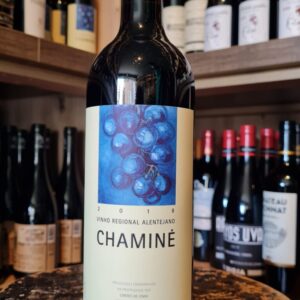 In 1988, A Danish-American couple, Hans and Carrie Jorgensen set out in a sailboat to find a place to start a family and plant vines. They came to Alentejo and they found “Cortes de Cima.” It was just a barren land and a few abandoned buildings. But Carrie, of Portuguese ancestry, said the landscape reminded her of California, her homeland. Hans, who was born in Denmark, fell in love with the Mediterranean sun. Their first wine was "born" in 1998 and the many successful vintages which followed as well as their pioneering spirit have put Cortes de Cima on the map. The main grape used is Aragonez (Spanish call it Tempranillo). It has a overt nose of fresh cherries, red plum, dark fruits and a lick of black liquorice. It is vibrant and well-rounded on the palate with good acidity and body. There is so much to love about this wine. One of my favourites enjoy!!
In 1988, A Danish-American couple, Hans and Carrie Jorgensen set out in a sailboat to find a place to start a family and plant vines. They came to Alentejo and they found “Cortes de Cima.” It was just a barren land and a few abandoned buildings. But Carrie, of Portuguese ancestry, said the landscape reminded her of California, her homeland. Hans, who was born in Denmark, fell in love with the Mediterranean sun. Their first wine was "born" in 1998 and the many successful vintages which followed as well as their pioneering spirit have put Cortes de Cima on the map. The main grape used is Aragonez (Spanish call it Tempranillo). It has a overt nose of fresh cherries, red plum, dark fruits and a lick of black liquorice. It is vibrant and well-rounded on the palate with good acidity and body. There is so much to love about this wine. One of my favourites enjoy!! -
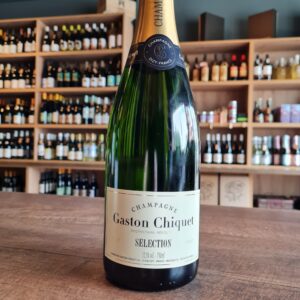 The Champagne grower-producer Gaston Chiquet has made a name for itself as one of the best. In a region with thousands of small producers, it is a credit to owners Antoine and Nicolas Chiquet. Based in the evocatively named Dizy, the family first planted vines in 1746 but did not produce Champagne until 1935, when brothers Ferdinand and Gaston Chiquet took the bold step of setting up their own label, rather than merely selling grapes to the larger houses. Today they produce 15,000 cases a year. This is a classic aperitif Champagne. Deliciously light, crisp citrus and apple orchard flavours mingle with sundry red-berried fruit. It is beautifully plumped out in the middle, courtesy of Premier Cru Pinot Noir fruit from the evocatively named village of Dizy, ending with delicate toasty notes.
The Champagne grower-producer Gaston Chiquet has made a name for itself as one of the best. In a region with thousands of small producers, it is a credit to owners Antoine and Nicolas Chiquet. Based in the evocatively named Dizy, the family first planted vines in 1746 but did not produce Champagne until 1935, when brothers Ferdinand and Gaston Chiquet took the bold step of setting up their own label, rather than merely selling grapes to the larger houses. Today they produce 15,000 cases a year. This is a classic aperitif Champagne. Deliciously light, crisp citrus and apple orchard flavours mingle with sundry red-berried fruit. It is beautifully plumped out in the middle, courtesy of Premier Cru Pinot Noir fruit from the evocatively named village of Dizy, ending with delicate toasty notes. -
Out of stock
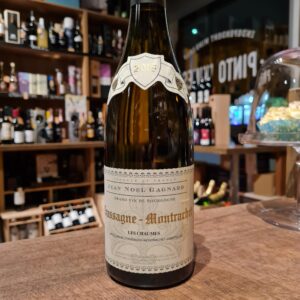 This famous Domaine has been run by Caroline Lestimé, Jean-Noël’s daughter, since 1989. Its 12.5 hectares of outstanding vineyards have been certified organic since 2014, and are now run biodynamically, though are not yet certified as such. Most of the estate’s vineyards are in the heart of Chassagne, with one vineyard in the Hautes Côtes de Beaune, which looks down on St. Aubin and was planted in 2015 at an altitude of 300 metres above sea level. The vines are Guyot-trained and planted on a moderate hill facing east. The soils here are stony calcareous clays which are enriched with biodynamic composts at the end of every winter. The wines are, in the best sense of the phrase, ‘low intervention’ wines, with each expressing the character of its site. The 2018 vintage started with good levels of winter rainfall, replenishing the soil moisture content. After a cold February and a rainy March, conditions in April were warm and dry, allowing the vineyard growth to catch up after the earlier delays. Flowering occurred under perfect conditions and summer brought consistently warm, sunny days through to harvest, which took place on August 26th. Grapes for this wine come from two similar plots: one parcel is in the upper part of the appellation (just under the road to Santenay) and the other on the lower part. 40 year old Vines Approximately 200 cases of this cuvée are made each year. Great wine to be appreciated. being an elegant and with layers of structure making this wine quite exquisite. Decanter highly recommended here.
This famous Domaine has been run by Caroline Lestimé, Jean-Noël’s daughter, since 1989. Its 12.5 hectares of outstanding vineyards have been certified organic since 2014, and are now run biodynamically, though are not yet certified as such. Most of the estate’s vineyards are in the heart of Chassagne, with one vineyard in the Hautes Côtes de Beaune, which looks down on St. Aubin and was planted in 2015 at an altitude of 300 metres above sea level. The vines are Guyot-trained and planted on a moderate hill facing east. The soils here are stony calcareous clays which are enriched with biodynamic composts at the end of every winter. The wines are, in the best sense of the phrase, ‘low intervention’ wines, with each expressing the character of its site. The 2018 vintage started with good levels of winter rainfall, replenishing the soil moisture content. After a cold February and a rainy March, conditions in April were warm and dry, allowing the vineyard growth to catch up after the earlier delays. Flowering occurred under perfect conditions and summer brought consistently warm, sunny days through to harvest, which took place on August 26th. Grapes for this wine come from two similar plots: one parcel is in the upper part of the appellation (just under the road to Santenay) and the other on the lower part. 40 year old Vines Approximately 200 cases of this cuvée are made each year. Great wine to be appreciated. being an elegant and with layers of structure making this wine quite exquisite. Decanter highly recommended here.


